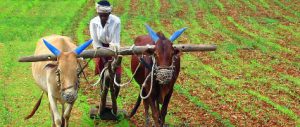What a rollercoaster ride the story of global food prices has been this year – and we’re only a month in.
Back in January, when news emerged that food prices had reached a new record high, many analysts were relatively sanguine about the rise. As I noted in a Global Dashboard post on 6 January, the new price spike was largely driven by meat, sugar and vegetable oils, rather than, as in 2008, staples like wheat or rice.
Governments weren’t sliding into panic measures – unlike in 2008, when over 30 of them imposed export bans, forcing prices still higher. And while the 2008 spike was marked by protests in 61 countries (with violent unrest in 23 of them), that didn’t seem to be happening this time around.
How things can change in a month. No sooner had I published that post than Algeria erupted in rioting over high food prices – and while food prices weren’t the cause of recent events seen in Tunisia, Yemen and Egypt, they have certainly formed part of the backdrop.
Panic measures by governments are back in the news too, as Middle Eastern and North African governments frantically try to rebuild national food stocks as a defence against high prices and civil unrest.
And while there hasn’t been a slide back into mass export bans – yet – a number of eastern European countries have imposed restrictions on wheat exports; and the fact that France has put export bans squarely at the centre of its G20 agenda shows that concern about the risk of zero-sum games on food remains acute.
Perhaps most critically, price rises are now clearly discernible in markets for staple grains. Corn prices are at their highest level in 30 months, as the United States – which accounts for two thirds of global corn exports – experiences increased demand from ethanol distilleries and from China, coupled with reduced output from poor weather. Soybeans have been rising steadily too, again in large part thanks to Chinese imports.
And then there’s wheat. Wheat prices rose sharply during summer last year, when they were sent soaring by extreme weather in Russia, followed soon afterwards by its export ban. More recently, they have risen still higher because of poor weather in Australia and panic buying by Middle East and North African governments – most notably in the case of Egypt, the world’s largest importer of wheat.
So that’s the story so far on food prices in 2010. Now, in the latest episode of this gripping global drama, all eyes are turning to China, where the country’s northern grain-producing regions have been in the grip of a brutal drought for more than three months, raising fears about its winter wheat crop.
In many areas, the drought is the worst in six decades; in Shandong province, a key grain producer, the drought is the worst in 200 years. The government is spending nearly a billion dollars on emergency measures (extending even to firing anti-aircraft guns at clouds). Media coverage is mushrooming; futures markets are taking fright.
In the back of many minds is the worrying thought that while rice prices may not be spiking yet, there’s a school of thought that believes they did so in 2008 in large part because high wheat prices prompted consumers to substitute rice for wheat. And it was when rice spiked that things really started to go haywire in 2008 – with export bans, hoarding and all the rest of it.
So just how bad is it?
Not necessarily as bad as the more lurid media coverage might lead you to think – though it could become that bad, depending on what happens in the next few weeks. That’s the key message from the Food and Agriculture Organization, whose Global Information and Early Warning System team published a Special Alert on China on Tuesday this week.
Winter wheat doesn’t get harvested until June, and early February in China is still in the dormant phase for winter wheat rather than its active growth phase – so as yet, wheat yields haven’t necessarily been affected by the drought. Instead, the impact of low soil moisture and snow cover so far has been to reduce the wheat plants’ protection against frost, which hasn’t been a serious problem as yet, as temperatures have been pretty mild.
But with wheat plants made vulnerable by the drought so far, a cold snap in the next few weeks would be devastating – as, needless to say, would a continuation of the drought into the active growth period.
In the background is the factor that no-one really knows whether China has large reserves of wheat or not, as commodities journalist Javier Blas noted in the FT recently: “A senior Western official recently told me that his estimates of stocks of wheat, corn and soyabean in China – which are widely followed by the market – are nothing more than ‘informed guesses’. The problem is that many countries see information about agricultural commodities markets, particularly the level of stocks, as state secrets.”
It’s uncertainties, maybes and what-ifs like these that have futures markets spooked by the drought in China – that, and a more generalised sense of what a game-changer it would be if China became a net importer of wheat.
As noted above, Chinese demand for corn and soya imports has been a major factor in rising prices for those crops. Wheat, on the other hand, is something that China’s long been self-sufficient at producing. But what happens if it has to turn to world markets to meet its needs – in particular, to the world’s largest wheat exporter, the United States? Here’s Lester Brown’s take on it, in his book Plan B:
"This will pose a fascinating geopolitical situation. More than 1.3 billion Chinese consumers, who had an estimated $160 billion trade surplus with the US in 2004 [which is nothing to what it is now, of course] … will be competing with Americans for US grain, driving up US food prices.
"In such a situation 30 years ago, the United States simply restricted exports. But China is now banker to the United States, underwriting much of the massive US fiscal deficit with monthly purchases of US Treasury bonds."
As Brown implies, the underlying point in all this is that the global food security agenda – like the geopolitics of resource scarcity more broadly – is currently treading a fine line between a zero-sum game of resource nationalism and a non-zero sum game of international cooperation based on clear-eyed recognition of global interdependence.
Moving decisively towards the latter outcome will involve China and other G20 countries agreeing to much greater transparency over their national food reserves, a clear commitment not to impose sudden export restrictions and probably also a multilateral system of food buffer stocks.
It will involve substantial investment in resilience at country level, through scaling up social protection systems and other risk-reduction mechanisms, and a “21st century Green Revolution” in agriculture that not only produces more food, but does it more sustainably and resiliently too.
But above all, the path to a non-zero sum outcome on food security will involve a need for franker discussion about fair shares in a world of limits. It’s already clear that reaching a global deal on climate change will require agreement on how to share out remaining “carbon space”. As global food supplies become tighter, in a world of resource scarcity and climate impacts, similarly charged equity issues will arise over questions about whether the world can afford to use vast amounts of grain, land, water and energy for “western diets” or inefficient biofuels, when 925 million people remain undernourished.
Alex Evans runs the resource scarcity and climate change program at New York University’s Center on International Cooperation, and is an editor of GlobalDashboard.org.
Homepage image from Bert van Dijk


